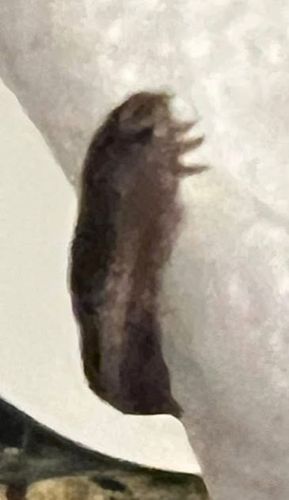Caddisfly Larva (case-bearing type)
Scientific Name: Tyloderma foveolatum
Order & Family: Order: Trichoptera (Caddisflies), Family: Varies widely (e.g., Limnephilidae, Leptoceridae, Brachycentridae, etc., depending on precise case construction and morphology, which is difficult to ascertain from this image alone).
Size: Larvae typically range from 0.5 to 3 cm (0.2 to 1.2 inches) in length, depending on species and developmental stage. The case can add to the perceived size.

Natural Habitat
Freshwater aquatic environments such as streams, rivers, ponds, and lakes. The larva constructs a portable case from various materials like sand, tiny stones, twigs, or plant fragments, which it carries for protection.
Diet & Feeding
Mainly detritus, algae, diatoms, and small organic particles filtered from the water or scraped from surfaces.
Behavior Patterns
Larvae develop in water, clinging to submerged vegetation or rocks using a silk attachment. They filter feed or scrape algae. Adults are short-lived and non-feeding, focused on reproduction. The adults are often found near aquatic habitats where their larvae develop.
Risks & Benefits
Caddisfly larvae are excellent indicators of water quality, with many species requiring clean, unpolluted water. They are a significant food source for fish and other aquatic animals. They pose no direct risks to humans.
Identified on: 8/10/2025